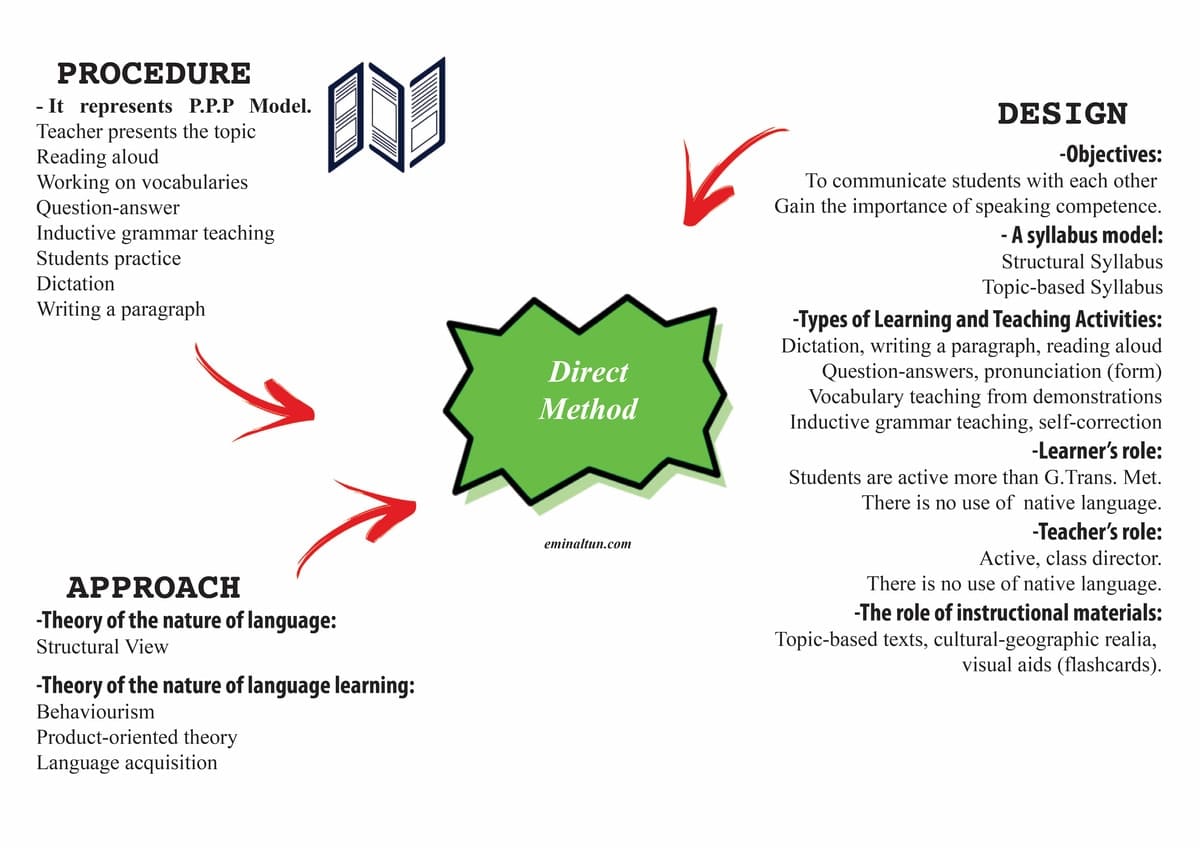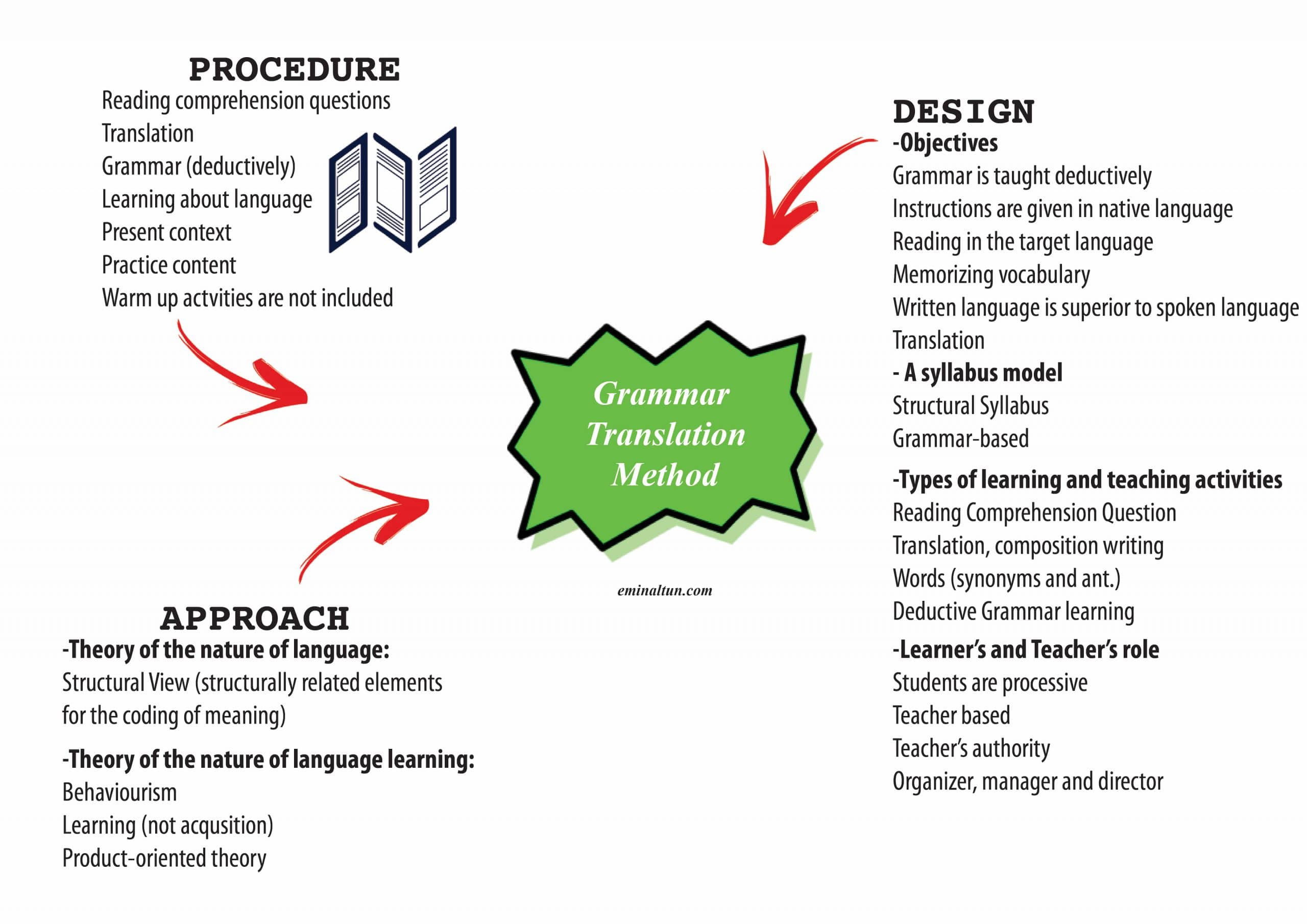Direct Method in language teaching is known as a Natural Method from beginning 20th century. It is a non-scientific method but it is a movement toward to a scientific method as response to Grammar Translation Method. GOUIN built this method through child’s language learning. There are conversations for practicing language. Grammar is taught inductively.
Lessons are topic-based, there are cultural, geographic texts and so on. Vocabulary is taught through demonstrations, these are important for making explanation. Evaluation is not written exam, but it is based on speaking activity.
Drawbacks of direct method:
-
Demonstration can consume a lot of time,
-
No textbook,
-
Teacher’s spoken competence can be a problem if it is not improved,
-
Classroom nature,
-
Lacked of Applied Linguistic and psychology of learning.
It was quite successful in private schools, but wasn’t quite successful in public schools because of classroom nature and similarities between native lang. Also, target language is overemphasized.
Example
The teacher explains new vocabulary using realia, visual aids or demonstrations.
Aspects of the that method are still evident in many ELT classrooms, such as the emphasis on listening and speaking, the use of the target language for all class instructions, and the use of visuals and realia to illustrate meaning.

